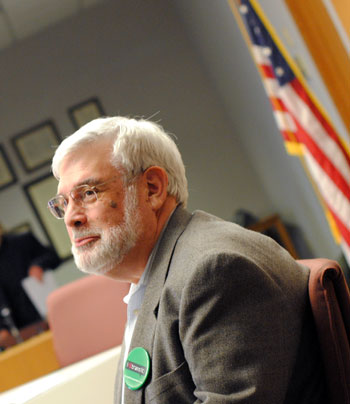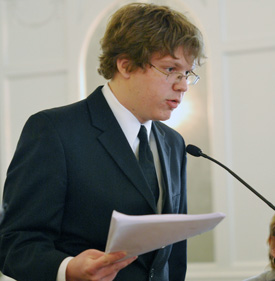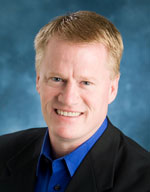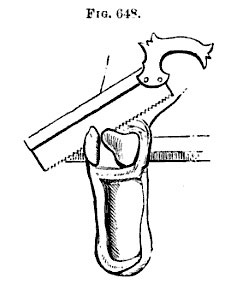Medical Pot Amendments May Yield Vote
Ann Arbor city council meeting (March 7, 2011) Part 2: At its first meeting in March, the city council undertook extensive amendments to a licensing proposal for medical marijuana businesses that it began considering for the first time at its Dec. 6, 2010 meeting. However, at the early March meeting, the council ultimately decided to postpone again its initial vote on the licensing proposal, which will eventually require two votes by the council, if it is to be enacted.
The city council will again take up the issue of licenses for medical marijuana businesses at its Monday, March 21 meeting.

Councilmember Sabra Briere (Ward 1) raised her hand and waited to be acknowledged by the mayor before speaking at the March 7, 2011 council meeting. (Photos by the writer.)
The council had previously heavily amended the licensing proposal at its Jan. 3, 2011 meeting as well as at its Feb. 7 meeting. The amendments made on March 7 put the council possibly in a position to make any final amendments, and to take its initial vote on the licensing proposal at its March 21 meeting. [.pdf of medical marijuana licensing proposal after March 7 amendments – "clean" version] [.pdf showing amendments undertaken at the March 7 meeting – "marked up" version]
Also at the March 21 meeting, the council is expected to extend the moratorium on use of property within the city for medical marijuana businesses – first enacted at the council’s Aug. 5, 2010 meeting. The initial moratorium was supposed to last only 120 days, but was subsequently extended at the council’s Nov. 15, 2010 meeting for another 60 days, and again at its Feb. 7, 2011 meeting an additional 60 days, until March 31, 2011. The council wants to coordinate the second and final vote on a medical marijuana zoning ordinance, which it passed initially on Oct. 18, 2010, with the vote on the licensing ordinance.
An additional medical-marijuana-related item, postponed from the March 7 meeting until March 21, is a proposal to enact a clear non-disclosure policy for information that the city might gather from people who have registered with the state of Michigan as medical marijuana patients and caregivers under Michigan’s voter-approved Michigan Medical Marijuana Act.
Part 1 of the March 7, 2011 city council meeting report – which deals with the non-medical marijuana issues on the agenda – was previously published as a separate article. [Full Story]










